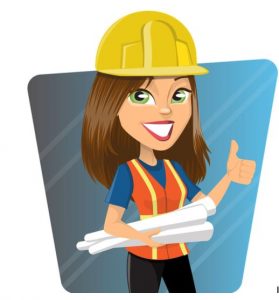Most Common Workplace Safety Hazards You Can Easily Avoid
Workplaces aren’t the same and have different health and safety hazards. But, there are a couple of common workplace safety hazards that you can easily avoid if you are aware of them. Even if you think your workplace is at low risk for these dangers, it is always better to be safe than sorry as some can be costly. Accidents can happen when you least expect, therefore, for the interest of your company as well as your employees, everyone at the workplace should be educated on where the safety hazards lie.
6 Safety Hazards and How to Avoid Them
1. Falling Hazards
Employees can slip, trip and fall anywhere, whether the location is on a highly dangerous job site or in a small office space. This kind of accidents can cause head and back injuries, broken bones, cuts, sprains and pulled muscles. Employees can slip on wet surfaces, fall over cables and equipment or due to uneven surfaces. No matter the location, when an area is wet, it is important to put a caution sign out or to dry the area asap. Cables should be installed neatly so that they do not cause obstruction and equipment should be put in place after use. When working in areas where uneven surfaces are being faced, the right footwear should always be used.
2. Electricity Hazards
Wires that are exposed can cause electrocution directly or indirectly, and faulty wires can even lead to a fire. Electrical installments should be done by a trusted professional and maintenance should be kept in consideration. In areas where working with equipment is part of the job, workers should wear electrical hazard rated footwear.
3. Fire Hazards
The first step to fire safety is to make sure your business has a fire detector and fire alarm installed as well as fire extinguishers throughout the building. Maintenance checks to these installations should regularly be made. Employees should familiarize themselves with how the alarm system and fire extinguishers work. When a fire should happen when no one is around, having a fire alarm system can help prevent disaster. In the case of a fire during working hours, it can help save lives if a proper escape plan was presented to the employees beforehand. The employees should also be aware of fire hazards that can be caused by equipment or appliances that are left on or flammable liquids and gases.
4. Ergonomic Hazards
A strain on our body can be caused when you stay in the same position for a long time. Whether you are working in sitting position or standing position, your body can be at risk of injury. The same goes for a job that involves repetitive movement that affects your back and posture. The ergonomic principle should be implemented in your working environment to help avoid pain, fatigue, or even illnesses. When doing the heavy lifting, there are specific guidelines to follow that can help stay clear of injuries. Having breaks at certain times do not only prevent ergonomic hazards, but they give you a mental break as well.
5. Biological Hazards
Workers that are working with chemicals are in most cases well aware of how harmful exposure to certain chemicals can be if they are not taking the needed precautions. But, there are other exposures that employees might come in contact with unknowingly. These are biological hazards, which are often not easy to notice and therefore overlooked. Bacteria, viruses, insect, and droppings from animals as well as bodily fluids are natural hazards that can cause illnesses and diseases. Personal hygiene is the first step to keep yourself protected. Maintaining a clean working environment is vital for good health. And calling in sick (when you are!), will avoid spreading viruses to your co-workers. Another biological hazard that is hard to notice is black mold that can occur in a building when moisture is high, because of poor ventilation or water damage to the roof. If mold symptoms are detected, it is essential for the health of your employees to contact a professional who can take care of the “silent killer.”
6. Noise Hazards
Loud noises can indeed cause permanent damage to your hearing, unfortunate for those music festival lovers out there. Hearing loss can happen over time when exposed to loud noises on a regular basis and also immediately in cases where explosive sounds are produced. In specific jobs, it is impossible to avoid loud noises. Therefore, it is up to the employer to provide hearing protection in areas where needed. By controlling the exposure to loud noise through closing off areas where the noise occurs, you keep those employees who are not involved with the noisy act itself safe.
Not all working areas call for frequent training on workplace safety and equipment. Roofers for instances will be trained on the dangers that lie on top of a rooftop, while factory workers would be educated on the dangers of factory machines, electricians will focus more on electrical safety, and the list goes on. Some workplace safety hazards are apparent, and sometimes all it takes is some common sense to avoid an injury. Either way, it is in your best interest to inspect your business for safety hazards and educate your employees on how to prevent incidents. A safe working environment will help your employers feel at ease and can even help increase the work efficiency.


